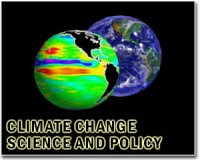| . |  |
. |
Washington (AFP) Feb 3, 2010 Global warming is good news for trees, which are thriving in higher temperatures and longer growing seasons, but bad news for ducks and other waterfowl, whose wetland habitat may dry up and disappear, two studies show. A study by researchers at the Smithsonian Environmental Research Center (SERC) in Maryland indicates that higher temperatures, longer growing seasons and increased levels of carbon dioxide brought by climate change are helping trees in temperate climates to grow faster. The researchers studied data on how many trees there were in 55 forests in the eastern United States during a 22-year period, as well as 100 years of local weather measurements and 17 years of carbon dioxide measurements. Their findings, which were published this week in the Proceedings of the National Academy of Science (PNAS) show that recent tree growth "greatly exceeded the expected growth," and they hypothesized that the spurt was due to climate change. "Increases in temperature, growing season and atmospheric CO2 have documented influences on tree physiology, metabolism and growth and likely they are critical to changing the rate of ... growth observed," says the study. Rising temperatures have increased the metabolic processes of trees and extended their growing season, while higher levels of carbon dioxide in the atmosphere could be spurring tree growth through carbon fertilization, the study says. But for ducks and other waterfowl, rising temperatures are bad news, according to a separate study conducted by researchers from the US Geological Survey and South Dakota State University and published this week in the journal BioScience. That study found that the prairie wetlands that stretch across five north-central US states and into Canada, where numerous species of duck, waterfowl and amphibians feed, breed and shelter, could dry up if temperatures rise by four degrees Celsius. A model developed by the researchers to try to understand the impact of a warmer climate on the wetlands projected major reductions in water volume, a shortening of the time water stays in the wetlands, and changes to vegetation in the vast area, which reaches across North and South Dakota, Minnesota, Montana and Iowa and into Canada. If temperatures rise by four degrees Celsius, parts of the North American prairie will become too dry for waterfowl and other parts will have too few functional wetlands and nesting habitat to support historical levels of wetland species, W. Carter Johnson, one of the authors of the study, said. Wetland species need a minimum amount of time in water to complete their life cycles. Mallards, for example, need at least 80 days of surface water for their young to grow and be able to fly and for breeding adult ducks to molt, or grow new feathers. "The prairie wetlands are highly vulnerable to climate warming and less resilient than we previously believed. It's difficult to imagine how to maintain today's level of waterfowl populations in altered climate conditions," study author Glenn Guntenspergen of the US Geological Survey.
Share This Article With Planet Earth
Related Links Climate Science News - Modeling, Mitigation Adaptation
 55 countries sent climate pledges to U.N.
55 countries sent climate pledges to U.N.Bonn, Germany (UPI) Feb 2, 2009 Most major greenhouse gas emitters submitted their emissions-reduction plans to the United Nations in a move that infused with life an accord reached at a climate conference in Copenhagen last year. As of Tuesday, 55 countries had sent in their action plans, including the United States, Canada, the 27 members of the European Union, India and China. Nations detailed their pledges to redu ... read more |
|
| The content herein, unless otherwise known to be public domain, are Copyright 1995-2010 - SpaceDaily. AFP and UPI Wire Stories are copyright Agence France-Presse and United Press International. ESA Portal Reports are copyright European Space Agency. All NASA sourced material is public domain. Additional copyrights may apply in whole or part to other bona fide parties. Advertising does not imply endorsement,agreement or approval of any opinions, statements or information provided by SpaceDaily on any Web page published or hosted by SpaceDaily. Privacy Statement |